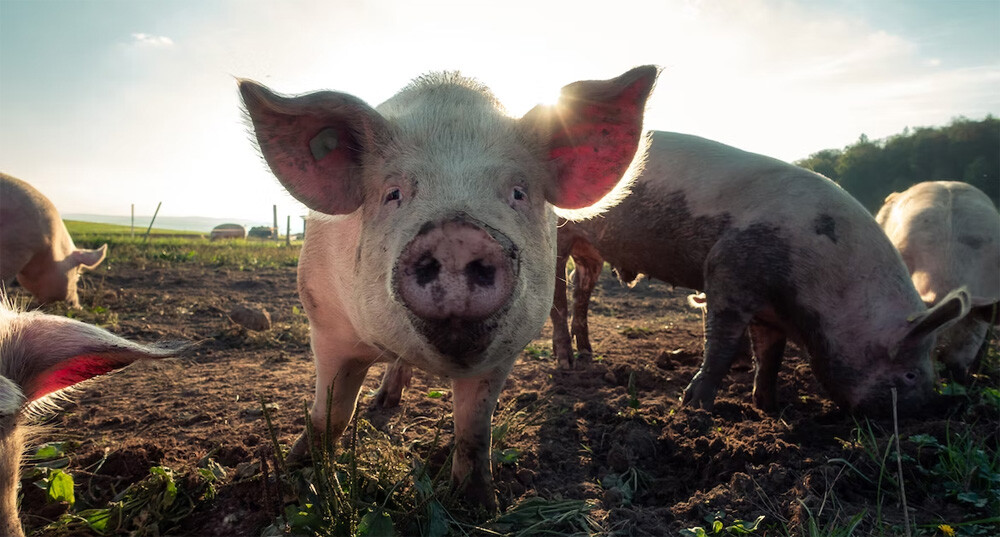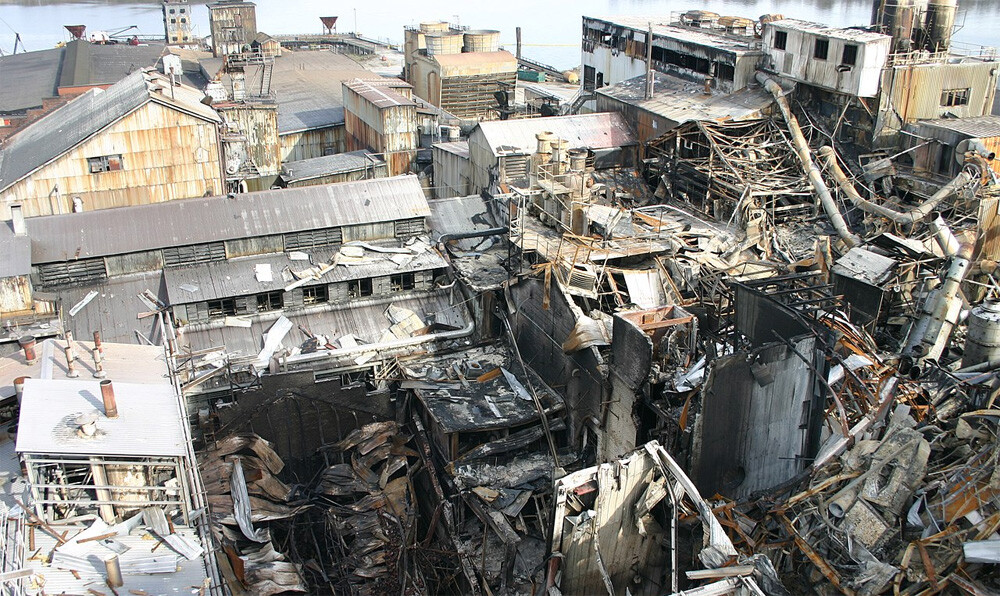5 Unspoken Deadly Risks That Come With Famous Jobs

Be careful choosing what you do for a living. It will also determine how you end up dying. For example, it will determine exactly what sort of documents are on your computer screen when you die of a heart attack for reasons unconnected to your job. It will also determine what your obituary says you did with your life, after you die, again from causes unconnected to your job.
We kid. In reality, you’re not going to get an obituary when you die. Also, in reality, many jobs do offer serious dangers, and they’re not ones anyone talks about.
Nuns Have a Higher Chance of Breast Cancer
Don't Miss
Back in the 18th century, breast cancer was sometimes called “the nun’s disease,” because of just how many nuns found themselves suffering from it. People didn’t know much of anything about disease back then, but they knew nuns tended to get breast cancer. Indeed, even saying “nun” and “breast” in the same sentence was a sin and resulted in being locked in the stocks, but still, people talked about all the breast cancer nuns kept getting.

Was God punishing nuns, people wondered, for being women? Unlikely, as nuns had a lower chance of experiencing cancers related to the reproductive system, such as cervical cancer. Today, we know one cause of cervical cancer is HPV, which can be sexually transmitted, which explains why it has a lower incidence among nuns. Nuns’ celibacy may also be why they get more breast cancer.
Childbirth is associated with a lower risk of breast cancer. One especially large study linked each baby that a woman gives birth to with a 7 percent reduced breast cancer risk, while other data says that the earlier you give birth, the greater protection you get. Breastfeeding also appears to reduce the risk of breast cancer (reduces it for the mother, not the baby). Your typical nun hasn’t given birth or breastfed at all, and a nun over 80 years old is three times more likely to get breast cancer than a non-nun of the same age.

Doctors are looking into how hormone therapy might give nuns (and non-nuns) the same protection from breast cancer that childbirth appears to. However, nuns are also more at risk than other women who never have children. It’s possible that sex, even without giving birth, confers some protection against breast cancer, though we don’t know the mechanism behind this. For safety’s sake, we therefore recommend sex, particularly sex with nuns — for your protection and theirs.
Become a Firefighter Now, and You Have a Higher Chance of Being a Casualty of World War II
No one becomes a firefighter because they’re fiercely wedded to the idea of living to old age. Trekking through flames is not safe work. Being a firefighter might be the most dangerous job of all, depending on which stats you look at. Those stats take into account not just the number of firefighters who burn to a crisp but the number who experience various other injuries, including sprains from all that heavy equipment. Sprains are non-fatal but still hurt, dammit.

If you happen to be fighting forest fires in Europe, however, you open yourself to a whole new level of danger. Stretches of Europe still contain lots of unexploded ordnance from the world wars, and sometimes, these decades-old bombs set off fires. And sometimes, these fires set off even more decades-old bombs.
Consider the wildfires in Slovenia last year, which detonated bombs from World War I, leaving firefighters to dodge shrapnel. Or, that same summer, there was a fire in Grunewald forest in Berlin. This was a forest within the nation’s capital itself, and it still had a bunch of bombs from World War II, nice and ready for a safe controlled explosion. Then came a fire and a most uncontrolled explosion, keeping anyone from coming within a mile of the place.

2018 was another bad year, with forest fires killing scores across Europe. Once again, with old bombs exploding, German firefighters had to face the possibility that one leftover from World War II would blow and take them with it. They armed themselves accordingly. In some places, firefighters ride a firetruck. Here? The crew rode out in a fire tank.
Inhaled Pig Brains Hurt Slaughterhouse Workers’ Nervous Systems
The slaughterhouse is another arena where the dangers are obvious. The chance of getting impaled by a hook, followed by your co-workers shrugging and throwing you in the sausage machine, is so strong that it was a central point of the definitive book about unsafe working conditions. We’ve also previously told you about a less obvious consequence of all that slaughter: PTSD. Then in 2008, we discovered something new. Something mysterious.

Slaughterhouse workers were getting sick. They felt tired, they felt pain, and at its worst, this disease left them unable to walk. It didn’t appear to be contagious — tests came back negative for every known pathogen. None of the patients showed any sign of injury or any previous history of nerve damage. It took doctors a while to even realize they all worked at pig slaughterhouses; initially, the only commonality that doctors noted was that all the sufferers spoke Spanish.
These workers, investigators finally discovered, all worked not just at slaughterhouses but at one part of the slaughterhouse: the nook where they harvest pig brains. Pig brains, like most parts of the pig, are safe to eat, so long as you follow all the usual instructions about thorough cooking. These workers, however, did not ingest pig brains through the expected digestive route. Instead, slaughterhouse operations turned brain tissue into mist using the power of pressurized air. This mist entered workers’ mouths and noses and went into the bloodstream. Their immune systems attacked the alien organic matter, then went rogue and attacked the workers’ own neurons.

This disease, first discovered in 2008, has now been named Progressive Inflammatory Neuropathy. The acronym, PIN, is this close to PIG, making for a real missed opportunity, but it’s still appropriate. One of the first symptoms is pins and needles in the extremities. If you yourself feel pins and needles, we regret to inform you that progressive inflammatory neuropathy is the likely explanation (if you have recently been inhaling vaporized hog brains).
Being in the Military Raises Your Risk of ALS
Speaking of jobs where you slaughter and then feel PTSD, let’s talk about the military. This is yet another arena with well-known risks, but we’re here to tell you about an unexpected one: ALS. ALS, or amyotrophic lateral sclerosis, is the illness often called Lou Gehrig’s disease or “the one that Stephen Hawking had.” If you know the disease best from the ice bucket challenge a few years back, realize that that was almost a decade ago, and you’re old.

After the first Gulf War, the military studied vets to see how much truth there was to the idea that the war left them with mysterious illnesses. Sure enough, the vets showed more signs of ALS than the general population. They had twice as much of the disease as civilians. This lent some credibility to the idea that soldiers were suffering from the effects of chemicals they’d encountered during the war, as your risk of ALS rises if you inhale stuff like diesel fumes.
Then these investigators compared those stats to vets of the Vietnam War. Turns out those vets also had an elevated risk of ALS. Then they looked at Korea, followed by World War II. All of these soldiers had more ALS than civilians. So, it sounds like combat in general raises your risk of ALS? No, that wasn’t it. The heightened risk even went for those who saw no combat. It even applied equally to those who were part of the military during peacetime.

The risk is there for all branches of the military, across all roles, and across all locations. Maybe strangest of all, there’s no clear correlation between the length of your time in the military and your chance of ALS (as there would be if some factor applied continuous pressure). Instead, it appears to be a direct matter of simply being in the military, in any capacity whatever.
We have no explanation that doesn’t involve some conspiracy theory. And we dare not relay that sort of conjecture to you. We all remember what happened to the last person who tried.
Make Sugar? Prepare for Explosions
Dust is explosive. Dust has a greater surface area than, oh, literally anything, allowing any spark to quickly jump across to all particles. Sawdust, coal dust, flour — it’s all explosive. In an average year, you can expect four or five American workers to die from an industrial dust explosion.

Sugar dust is especially explosive. Sugar is packed with energy and ready to oxidize, which works well when it’s flowing through your veins and you need a little energy but is dangerous under other circumstances. For this reason, sugar-processing facilities use dust-collection equipment. It grabs dust out of the air and keeps it from accumulating. But the Imperial Sugar refinery in Georgia fell a little short in the anti-dust department in 2008.
Spilled sugar formed piles feet high, spreading dust throughout the air and onto every surface. The mill threw up a few new barriers that pushed the dust into an even more confined space. Then on February 7th, some spark of unknown origin ignited the dust. A fireball zoomed through a transport tunnel, traveling from building to building. More dust caught fire, leading to a whole series of further chain-reaction explosions.

The flames in your fireplace reach around 600 degrees Celsius. This sugar fire was 2,200 degrees Celsius. People caught in the blaze had their skin drip right off their bodies. Once the dust settled, the death toll was 14 people, with dozens more injured. OSHA hit the refinery with one of the biggest fines they’d ever issued.
The place did get to recover a thousand tons of fire-hardened sugar from one silo that had merged into a solid rock. Legally, they could not sell it as food. Nonetheless, anonymous sources describe the burnt sugar rubble as “delicious.”
Follow Ryan Menezes on Twitter for more stuff no one should see.